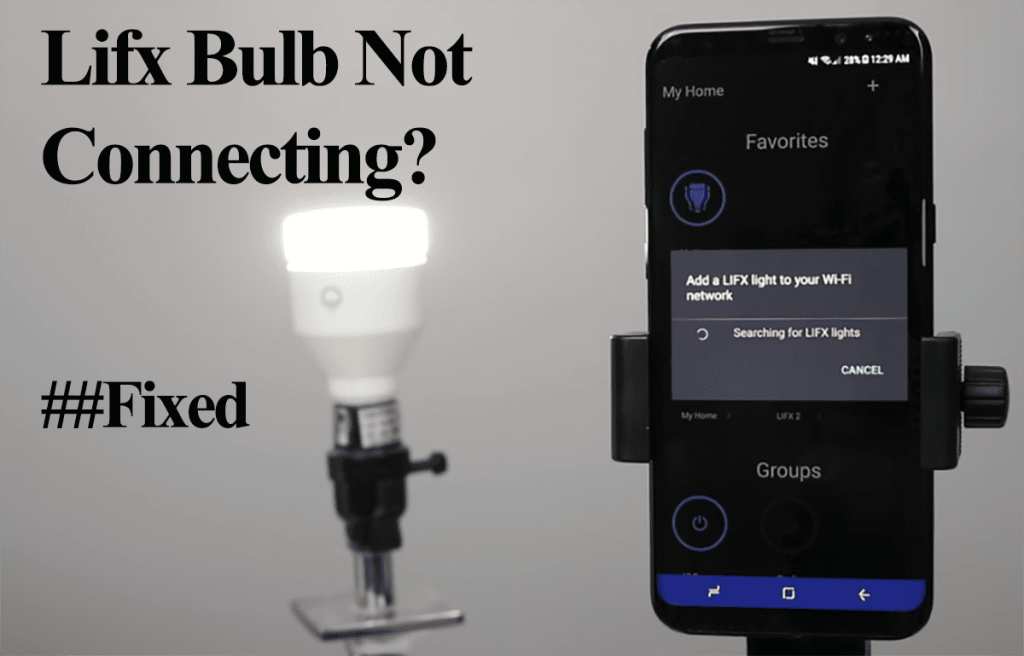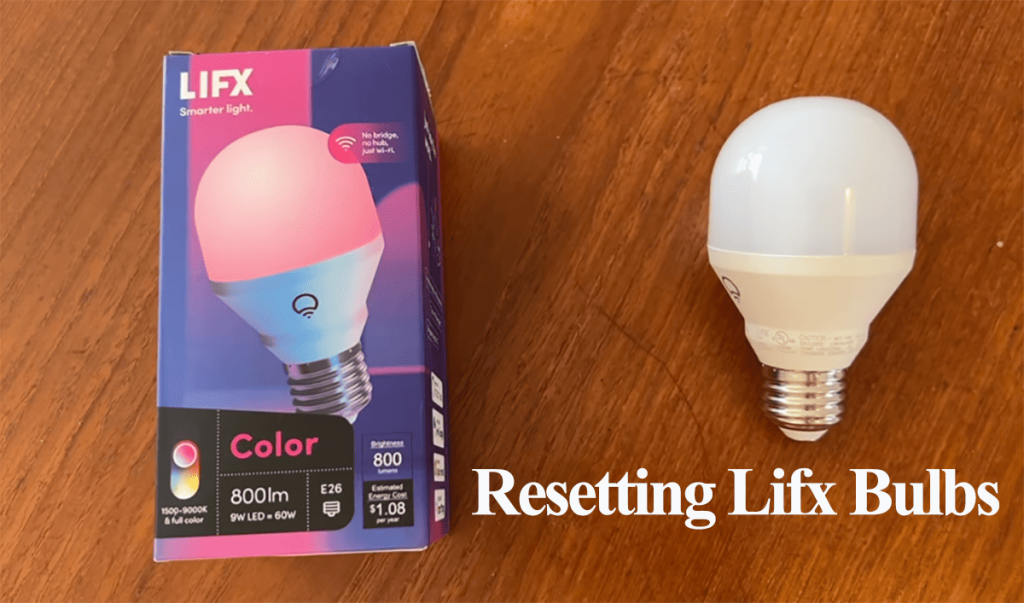Smart bulbs provide an innovative and unique home lighting solution in the lighting industry. Especially with the “Plug and Play” option, you don’t necessarily need a hub with these smart bulbs. As with most technologies, you will often run into hick-ups requiring your troubleshooting skills. Therefore, knowing how to reset the smart light bulbs is handy when fixing these issues.
This article will cover how to reset your smart lights and when resetting your bulbs is necessary.
When To Reset Your Smart Bulbs
Sometimes it’s pretty necessary to reset your Smart bulbs, and there are tell-tale signs that your bulb is malfunctioning and needs a reset. Here are some activities that necessitate bulb resetting;
- The bulb isn’t responsive – Sometimes, these smart bulbs develop response issues, especially when connected to a virtual assistant like Alexa, Google Assistant, or HomeKit. Resetting the bulbs helps clear up any software malfunctions ailing the bulb.
- When changing the Wi-Fi to your bulb – To change the Wi-fi network connected to your bulb, removing the bulb from the smart app, resetting it, and connecting it to the new Wi-Fi is the effective way. You won’t experience any troubles with this method.
- If the bulb is acting up – Smart lights can sometimes develop funny behavior, like lighting when they shouldn’t or continuous flickering. Resetting the bulb can help fix this and improve your user experience.
- If you intend to gift them to a friend – If you want to hand over a smart device to new ownership, remove the device from your routines and connected accounts. Resetting it ensures that the new owner doesn’t experience trouble setting up the device in their home.
How To Reset Smart Light Bulbs?
Smart bulbs come in various modes, Wi-Fi, Bluetooth, or ZigBee; regardless of the model, the reset process is relatively similar. If your bulb won’t work as intended, resetting it to its default settings is the first thing that comes to your mind. However, before resetting your Smart bulb ensure the following;
- Confirm that the bulb is connected to a powered socket. If someone accidentally switches off the main control switch, no amount of resetting will fix the issue. Therefore, double-check your switch; it should be in an on position.
- Verify that it’s connected to a compatible fixture. You should connect your Smart bulb to a standard fixture. Smart Wi-Fi LED bulbs won’t work on dimmers switches, 3-way lamps, ceiling fan fixtures, or fully enclosed fixtures.
- Disconnect and remove the bulb from the connected app. There are various smart apps you can connect and control the bulbs (Smart Life, Tuya, or Amazon Alexa). Before resetting your bulb, delete it from the app. Sometimes, failure to delete the bulb from an app may cause resetting problems.
With that said and done, we can reset the smart bulb. Here is how to reset your bulb;
- Connect the bulb to a standard fixture. Not the ones with dimmers on them.
- Starting with the bulb on, turn the switch on and off five times (where on/off counts as one time), ending with the bulb switched on. For ZigBee bulbs, turn them on/off 10 – 15 times.
- If the resetting is successful, the bulb flashes three times and blinks twice, indicating it’s in pairing mode.
Now, with the bulb reset, reconnect it to your respective app.
Why Is My Smart Light Not Pairing?
The most typical reason for Smart light pairing issues is attempting to connect the bulb to a 5 GHz frequency Wi-Fi network. Additionally, the bulb could be located out of the Wi-Fi range. Ensure the bulb is close to your router and the Wi-Fi band is set to 2.4Ghz.
If you have some Bluetooth bulbs, ensure that the bulb is close enough to be detected by your device.
Connection Checklist
To ensure that your smart bulb connects to Wi-Fi, ensure the following;
- A stable Wi-Fi network that’s not overcrowded. Also, use the correct Wi-Fi password when connecting the bulb.
- Connect to 2.4Ghz frequency band. You can switch off the 5Ghz band when connecting your light and switch it back on when done. Alternatively, confirm that your bulbs support the 5 GHz protocol. If it does, proceed to pair through it.
- That you are within the Wi-Fi range when setting up your bulb. Ensure the bulb is close to your router when setting up your Smart light.
- Reset the bulb before connecting to the network. Resetting clears up any software glitches that may be causing your smart bulb to misbehave.
- Clear the “Smart App” cache. A prolonged build-up of app-level cache can interrupt your app’s performance levels. On your phone settings > Apps > “Smart app” > Storage > Clear cache. “Smart App” represents your preferred smart lighting app.
- Update your “Smart app” Software. Ensure that your smart app runs on the latest version. If updating doesn’t help, uninstall and reinstall the application the connect the smart lights as shown above.
To resolve this issue, restart all your gadgets: the smart bulb, the Wi-Fi router, the hub, and your phone. To power cycle your router, unplug it from the outlet, wait about a minute for it to discharge, and reconnect it.
If your bulbs are linked to a central hub, ensure that it’s working and is connected to your router.
Final Thoughts
Resetting the smart light bulb process is relatively straightforward, irrespective of your light bulb brand. First, connect the bulb to a standard fixture, and turn the bulb on/off 5 – 10 times. The bulb blinks or goes through the color series for the multi-color smart bulbs.
Through this, you should easily reset your smart light bulb. If your bulb is already connected to the app, remove it from the app to easily reset it.



